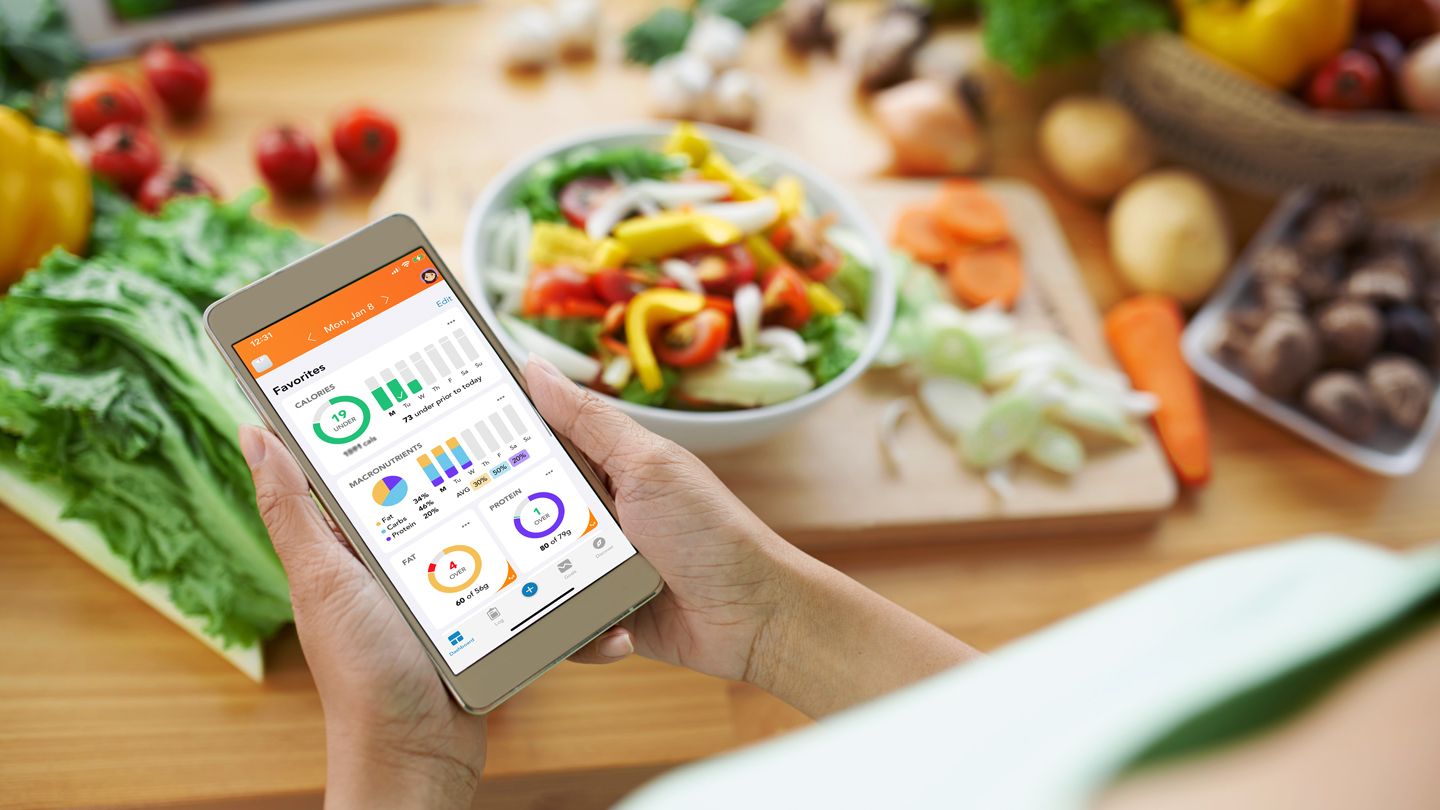If you’re taking a GLP-1 agonist, congratulations — you’ve taken an important first step toward a weight and lifestyle that's healthy for you. The next step? Tracking the calories you consume each day. This helps ensure you get enough nutrients to stay healthy as you lose weight, and the practice of tracking can help you understand the connection between your diet and any medication side effects.
But let’s be honest — calorie counting doesn’t sound like a whole lot of fun to most of us (insert unpleasant middle-school math memory here). The good news: If it’s been a minute since you’ve tried calculating how many calories you consume per day, the wonderful world of apps has made it easier and more convenient — no pencil required.
Here are some important tips on how to approach calorie counting while taking a GLP-1 agonist.
Determining Your Minimum Caloric Intake on a GLP-1 Is Key
Generally speaking, women on a GLP-1 should consume around 1,200 calories per day, and men should consume between 1,500 and 1,800 calories per day, says Elisabetta Politi, RD, certified diabetes educator at Duke Health in Durham, North Carolina. As a rough comparison, according to research published by StatPearls in 2022, women who are not on a GLP-1 and eat 2,000 calories per day will maintain (neither gain nor lose) weight, on average. For men, it’s about 2,500 calories per day.
That said, calorie needs vary among individuals, so it’s critical to consult with your healthcare provider for personalized calorie goals. “More active individuals may lose weight on a higher calorie intake, and people who are older may need fewer calories,” Politi says.
Eric Colombo, RDN, of The Ohio State University Wexner Medical Center in Columbus, Ohio, similarly notes that one’s individual calorie goal will depend on factors such as age, sex, and activity level. Yet, he observes that in most cases, 1,200 calories per day is the lowest recommended calorie count for anyone on a GLP-1, unless they are on a medically supervised, very-low-calorie diet.
Ultimately, Colombo recommends working with a dietitian to figure out your individualized calorie needs for weight loss on a GLP-1.
How You Track Calories Is Up to You (But It’s Easy With an App)
There’s no right or wrong way to keep track of the foods and portion sizes of what you eat each day — it’s up to the individual, explains Beth Czerwony, RD, of the Cleveland Clinic’s Digestive Disease & Surgery Institute in Ohio. “If you do better with pen and paper, go for it. If you find it easier and less time-consuming to use a phone app, that’s fine, too,” she says.
If you prefer to use an app, Lose It! makes it very convenient. After each meal or snack, you simply log the name and amount of the food you ate. Then, Lose It! keeps a running count of how many calories you’ve eaten that day, showing you whether you are under or over your goal. Lose It! will also calculate your intake of carbohydrates, fats, protein, and micronutrients.
However, keep in mind that estimating calories is never an exact science — especially if you are a creative cook who makes up recipes, or you frequently eat at privately owned restaurants that don’t provide nutrition information, says Politi.
Calorie Counting on a GLP-1 Helps Ensure You Eat Enough to Support Your Body
Tracking your caloric intake on a GLP-1 helps you remain aware of your minimum calorie needs. But you still may feel like eating less, for a couple of reasons. “GLP-1 medications can reduce both appetite and thirst, whether it’s because of the slowed digestion/delayed gastric emptying or due to GI side effects like nausea,” says Colombo.
For that reason, try taking in fewer calories at a time by scheduling several smaller meals and snacks throughout the day. Colombo generally recommends that people taking a GLP-1 eat five to six small meals/snacks daily, and never go more than three to four hours without eating.
Just be sure to allow yourself some flexibility when “life happens,” adds Politi. For example, you might aim to eat breakfast between 7 and 8:30 a.m. at least five times per week rather than a strict time every day, she says.
Tracking Lets You Monitor Nutrients and Manage Side Effects
Because you’re eating less on a GLP-1, the nutritional quality of your meals counts even more. For example, you need to consume enough protein to help prevent the muscle loss that can happen with weight loss, says Politi. She recommends at least 70 to 75 grams of protein per day. The Lose It! app can help you track your intake of protein and other nutrients.
More generally, it’s important to focus on nutrient-dense foods to support your body, muscles, and mind, says Colombo. Logging your meals as part of a calorie-counting practice keeps you aware of what you’re eating, making this easier to accomplish.
The best way to approach your meal plan on a GLP-1, however, is to first consult with your registered dietitian. “They can help you find the right balance of different foods to help you avoid any nutrient deficiencies,” Colombo says.
Finally, tracking your meals can also help you see how the foods you eat contribute to any gastrointestinal side effects you experience while taking a GLP-1 medication. For example, you may notice that eating foods higher in fat like cheese or fried foods brings on a bout of diarrhea.
Hate Counting Calories? Talk to Your Dietitian
If counting calories is too time-consuming or doesn’t serve your needs, talk to your dietitian. “After reviewing their meal plan and making sure they are meeting calorie and nutrient needs, I frequently tell clients on these medications who are losing weight at an appropriate rate to ‘enjoy the ride’ and not worry about counting calories. If the weight loss stops, I may suggest increasing exercise and/or keeping a journal and counting calories,” says Politi.
Editorial Sources and Fact-Checking
- Osilla EV, Safadi AO, and Sharma S. Calories. StatPearls. September 12, 2022.
- Gorgojo-Martinez J, Mezquita-Raya P, and Carretero-Gómez J. Clinical Recommendations to Manage Gastrointestinal Adverse Events in Patients Treated With GLP-1 Receptor Agonists: A Multidisciplinary Expert Consensus. Journal of Clinical Medicine. December 24, 2022.

